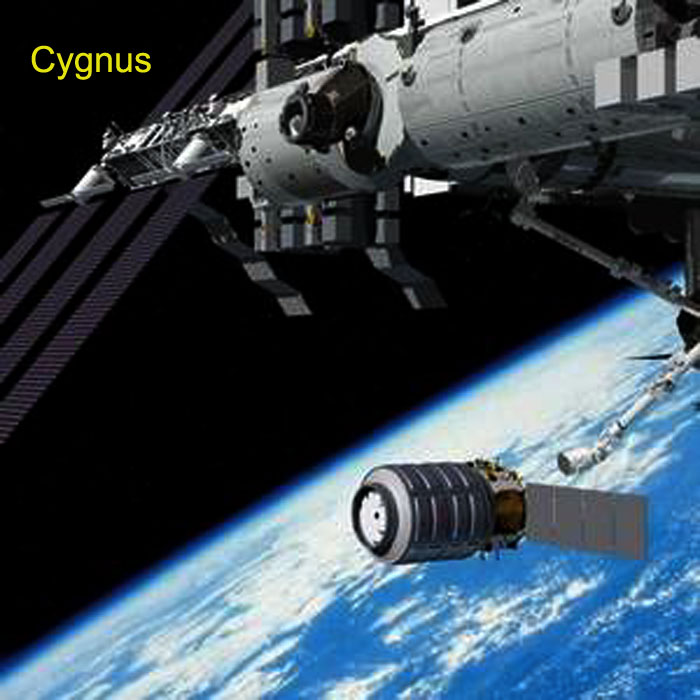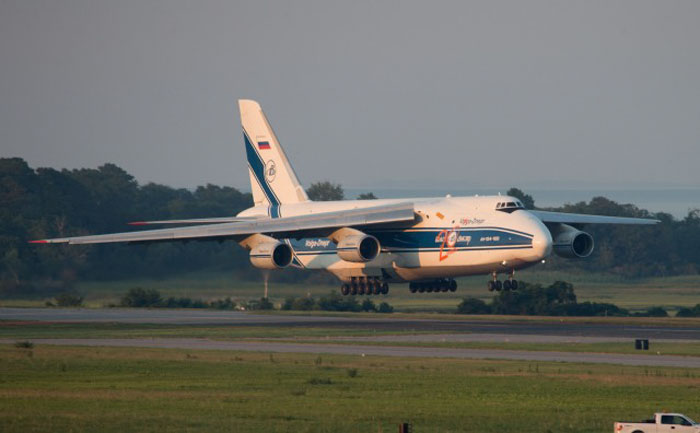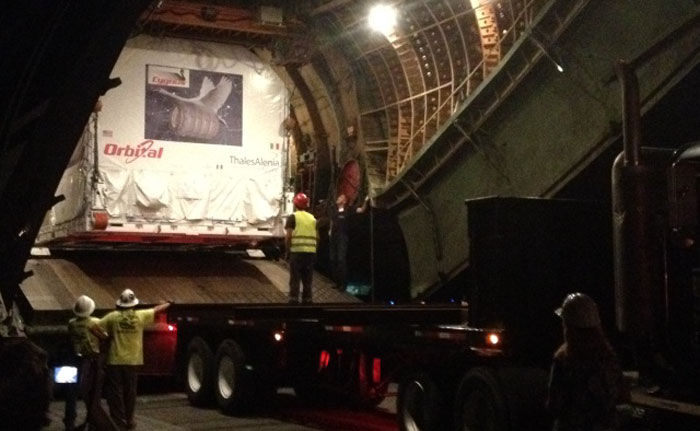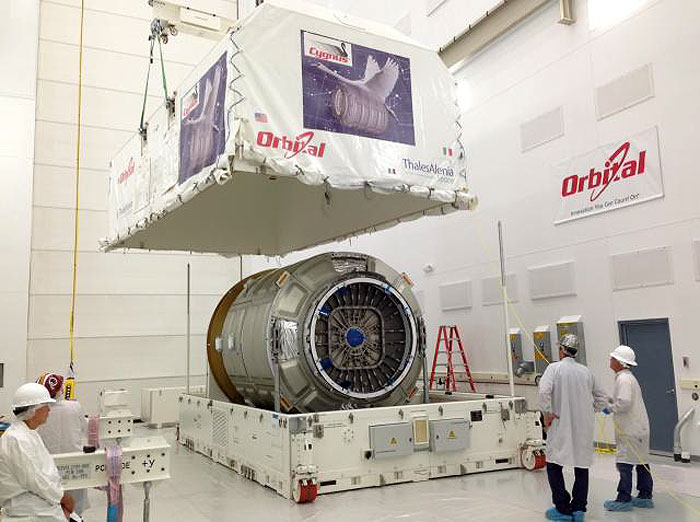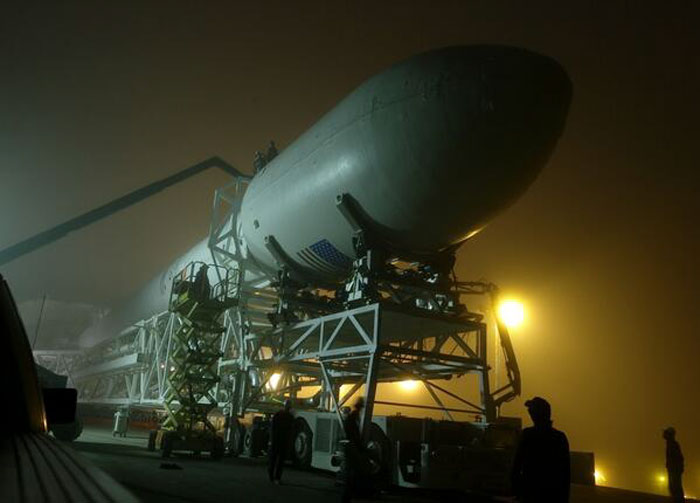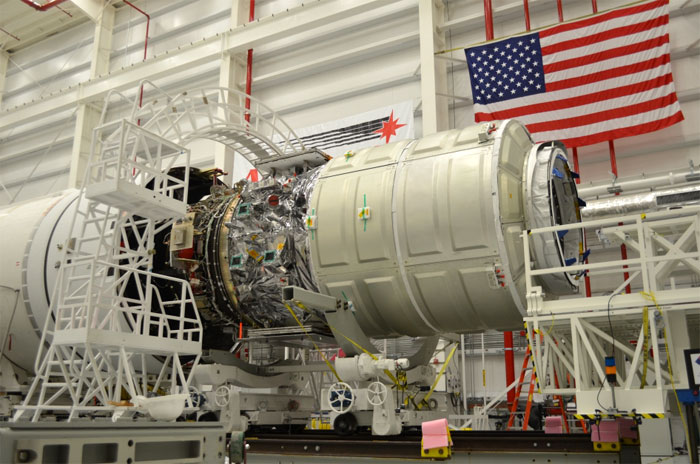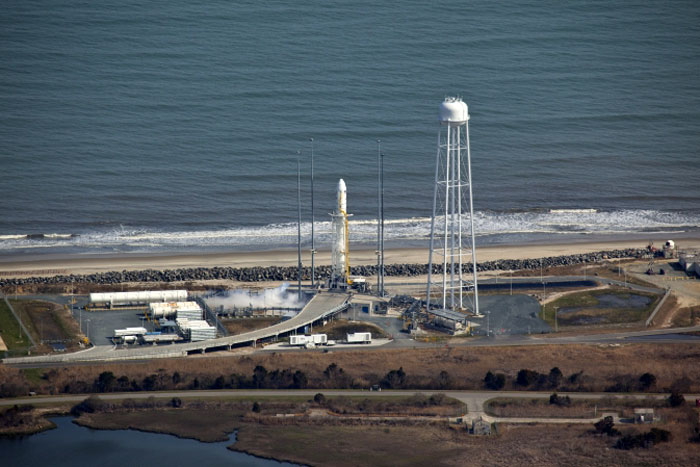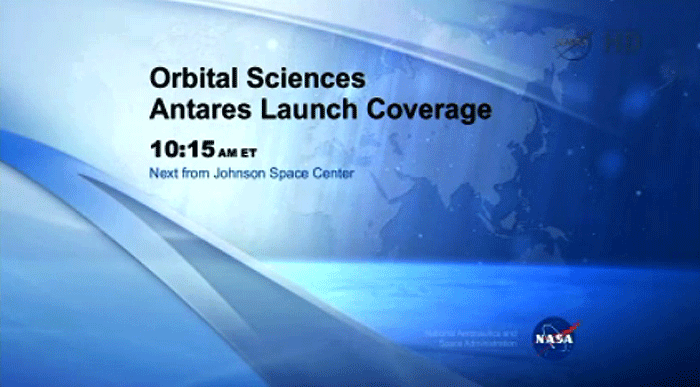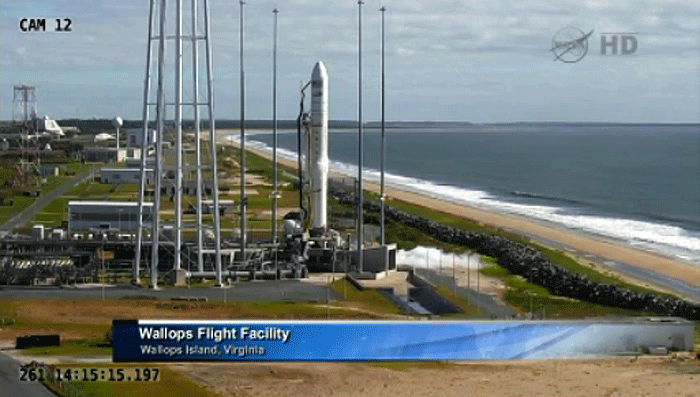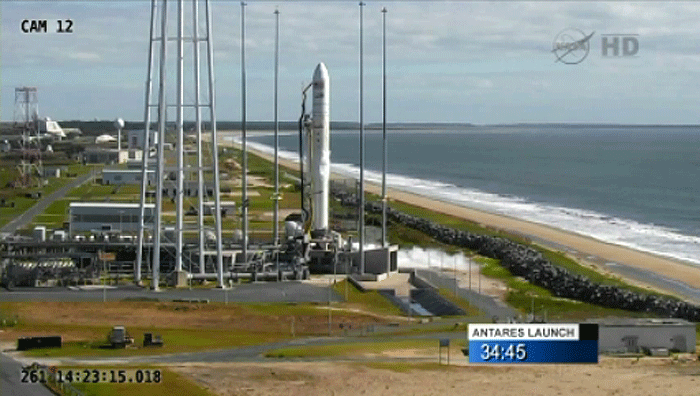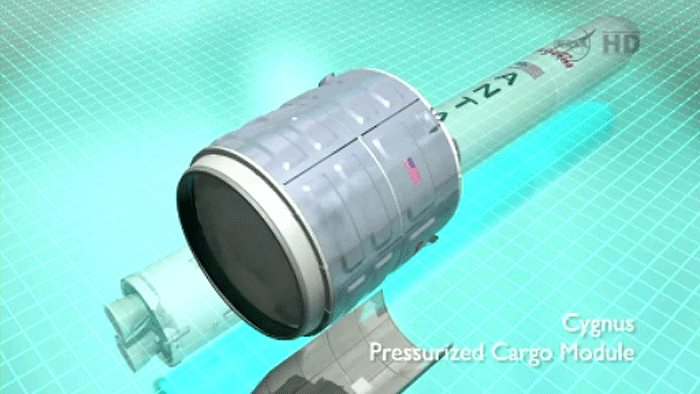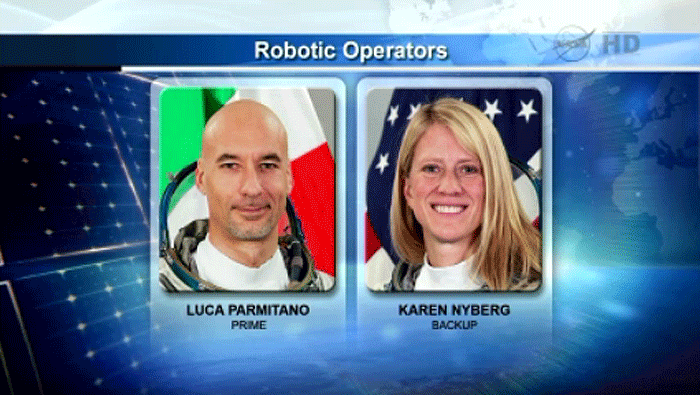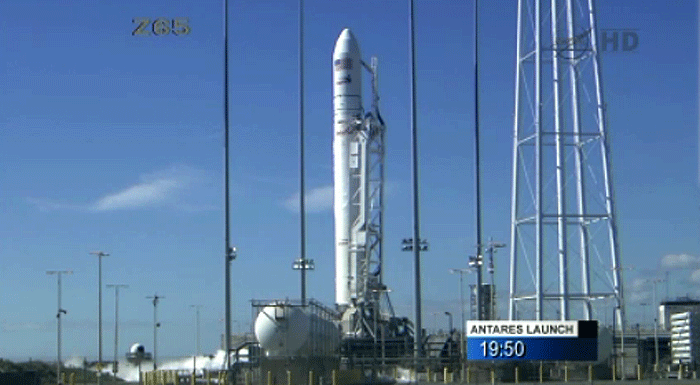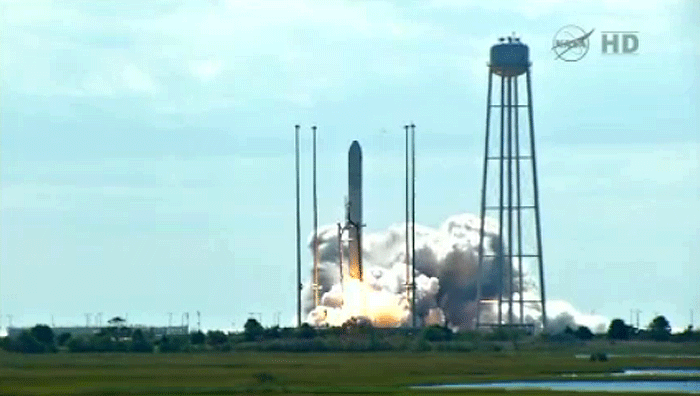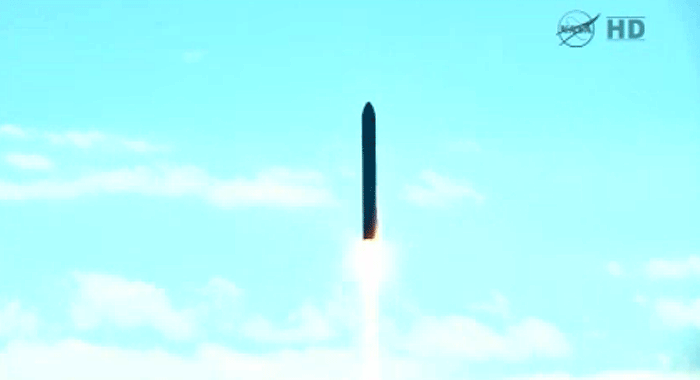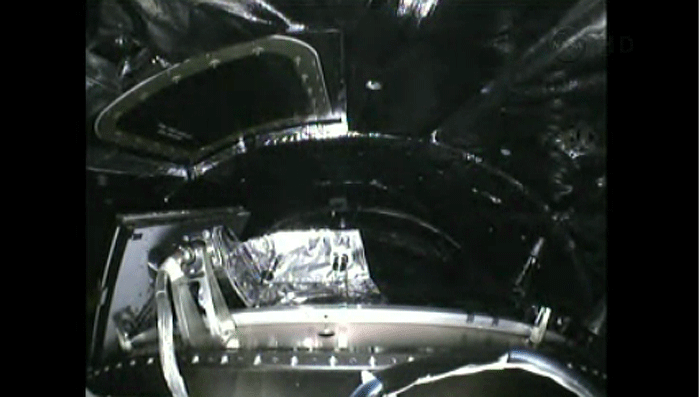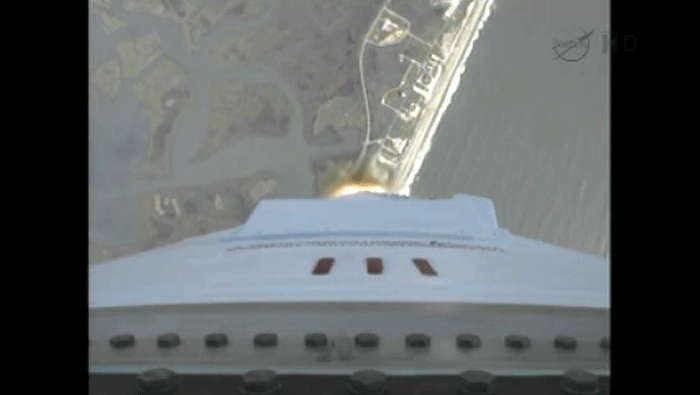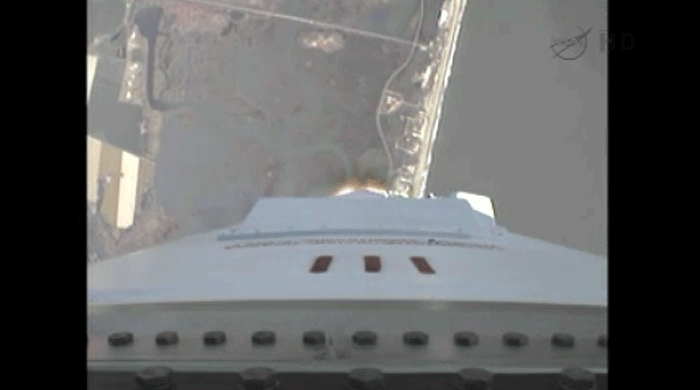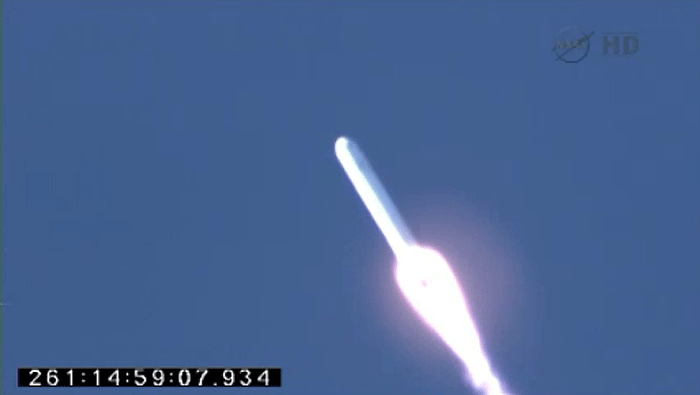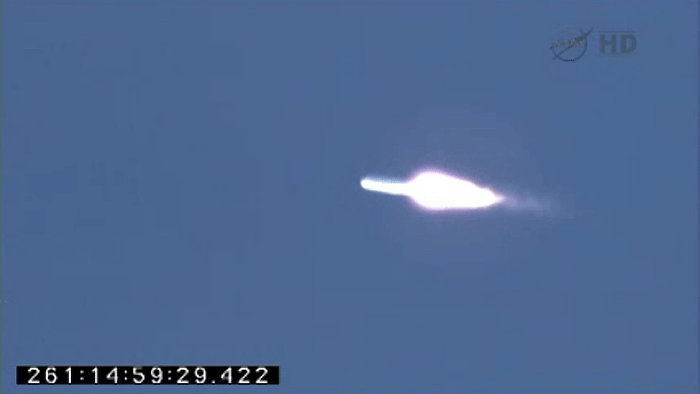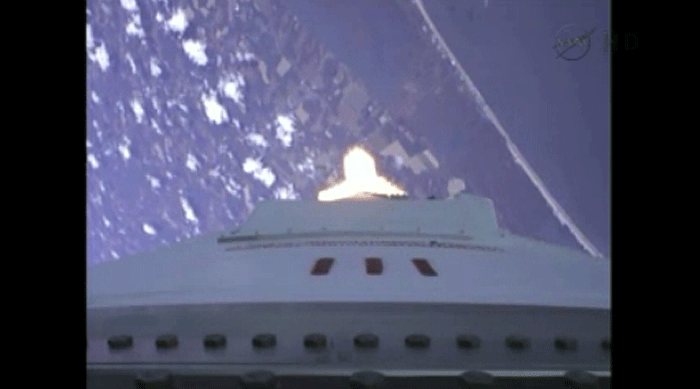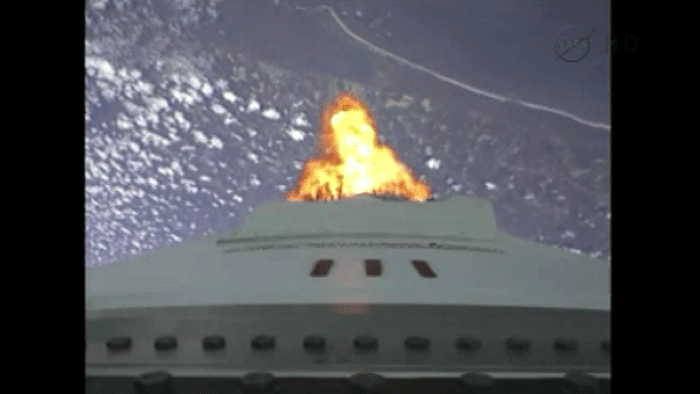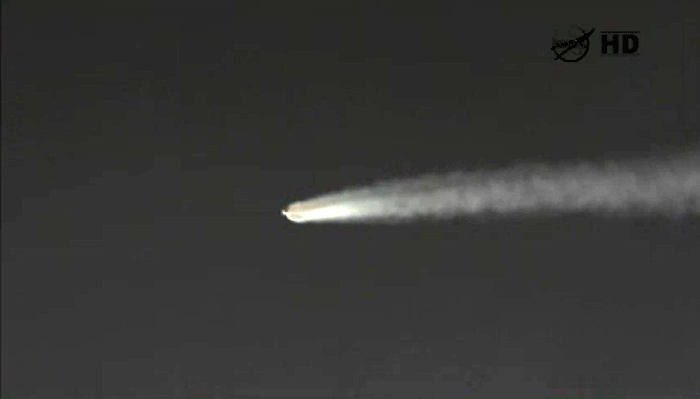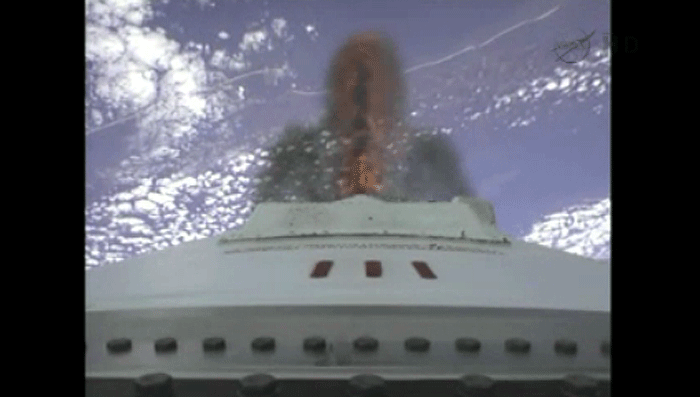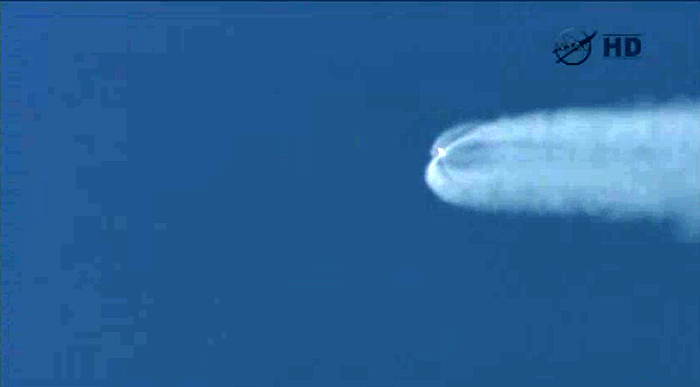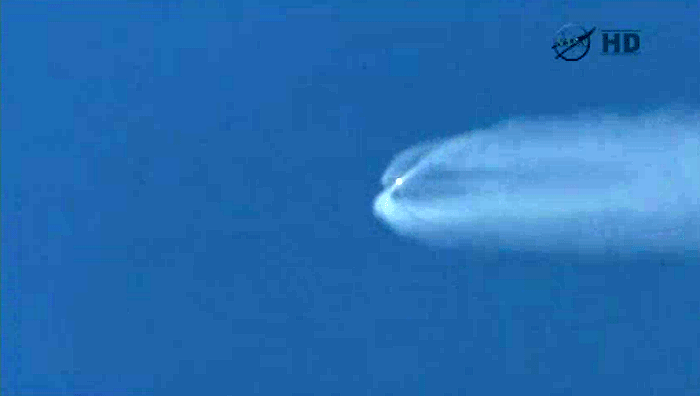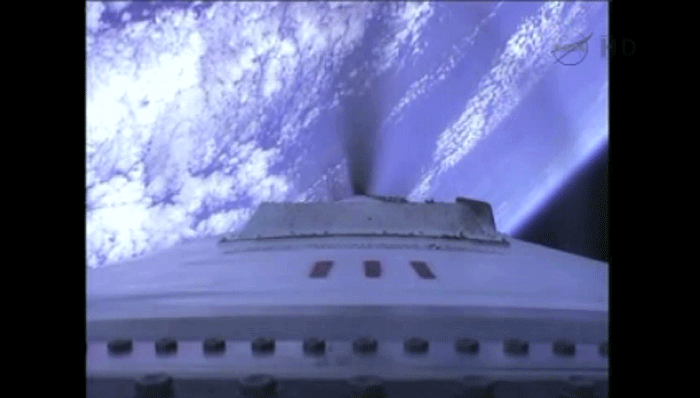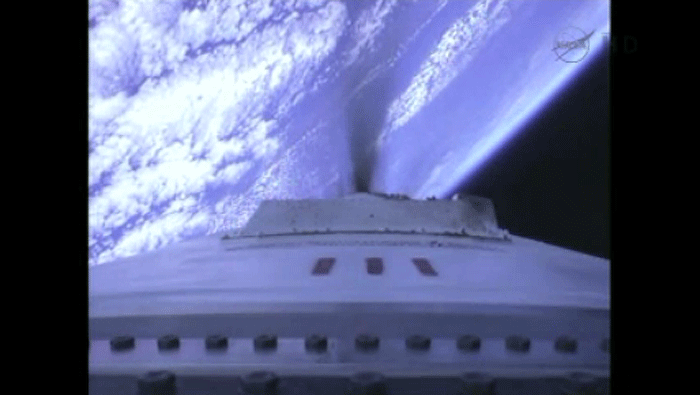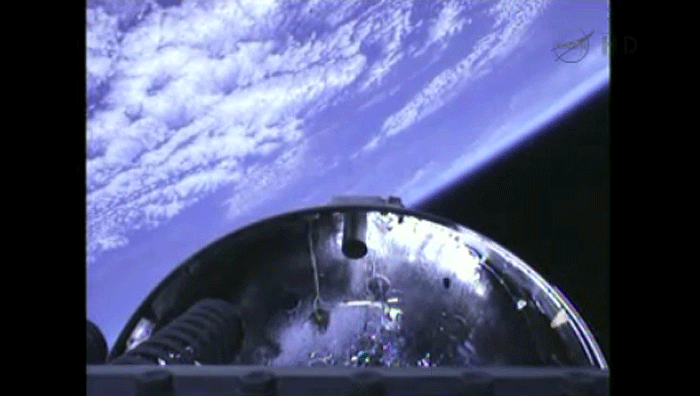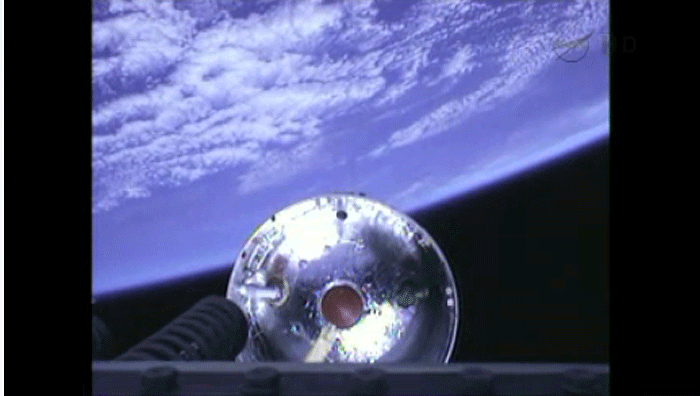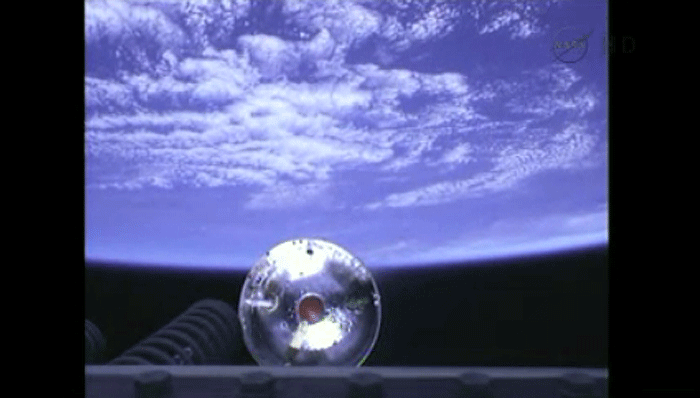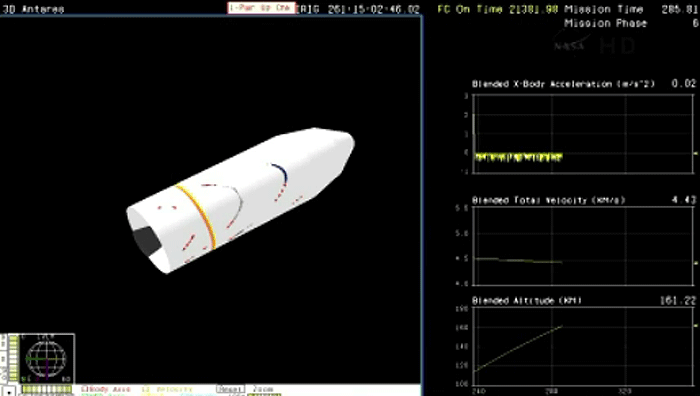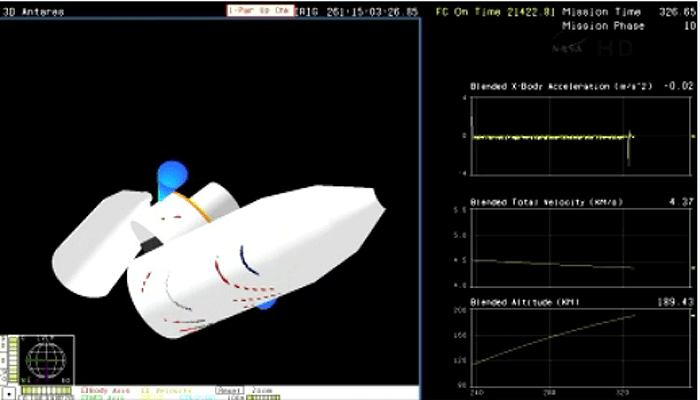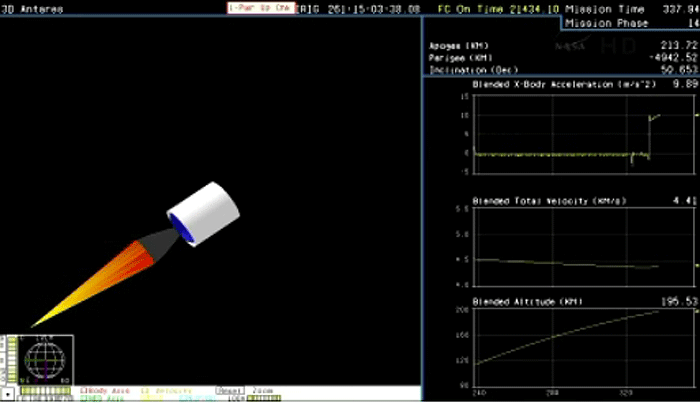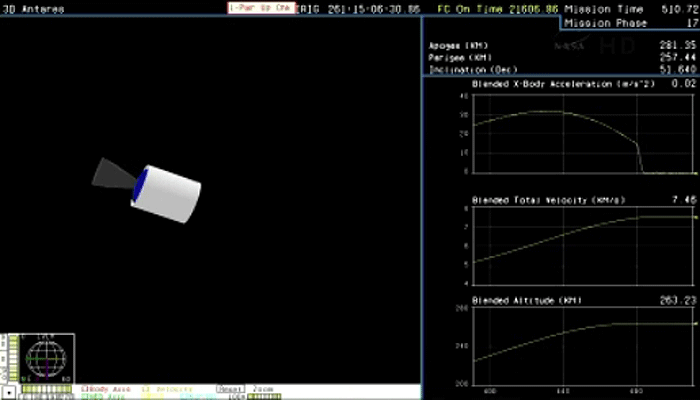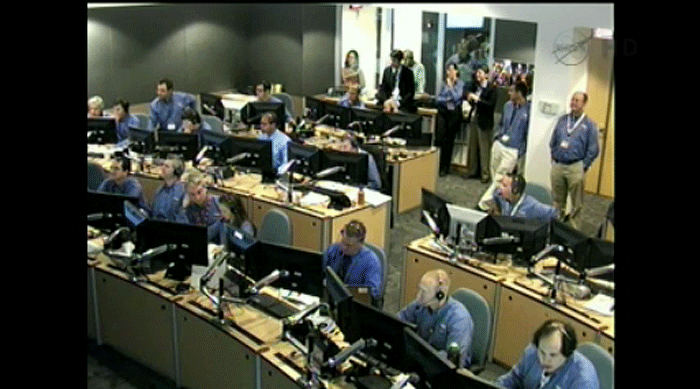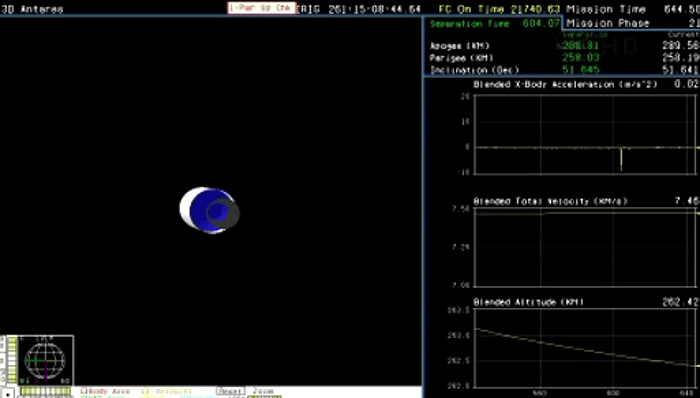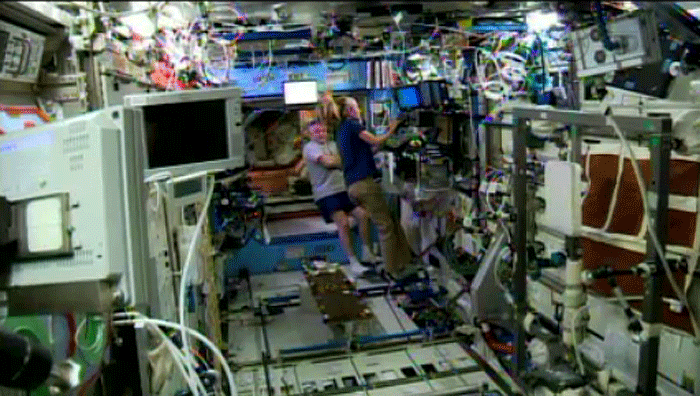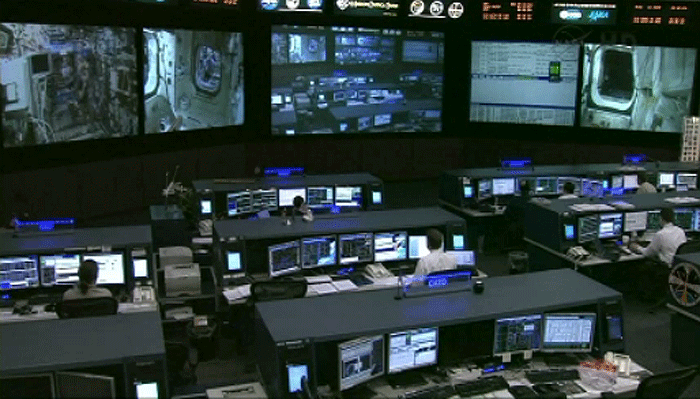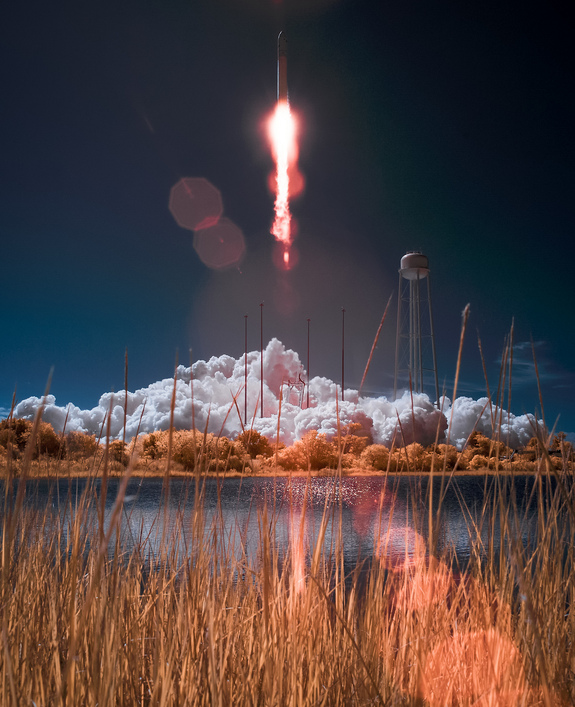.
A new commercial cargo spacecraft is ready for a Sept. 17 launch from Virginia on its first test flight to the International Space Station, NASA and Orbital Sciences Corp. said Wednesday.
“We’re in really good shape for the mission to start on time,” said Courtenay McMillan, NASA flight director for the demonstration mission, following a review in Houston. “We’re really excited.”
Dulles, Va.-based Orbital tested its new Antares rocket in April, and will now attempt to fly the Cygnus spacecraft in orbit for the first time.
The demonstration flight represents Orbital’s final milestone under NASA’s Commercial Orbital Transportation Services program, which has contributed nearly $288 million toward development of the privately operated rocket and spacecraft.
The same development program helped SpaceX establish its Falcon 9 rocket and Dragon capsule, which have since completed two contracted cargo flights to the station.
Based on the cylindrical cargo modules that shuttles flew to and from the orbiting research complex, Orbital’s Cygnus will test systems and perform various maneuvers before being cleared to approach and berth at the station Sept. 22.
The robotic spacecraft will carry about 1,500 pounds of low-value cargo, mostly food.
During its planned 30-day visit, astronauts will pack the Cygnus with trash that will burn up with the vehicle when it re-enters the atmosphere.
A successful demonstration would allow Orbital to start executing a $1.9 billion contract for eight resupply missions, which could start as soon as December.
“Things are starting to come together,” said Frank Culbertson, Orbital executive vice president and a former astronaut.
SpaceX is upgrading the Falcon 9 and Dragon, and they are not expected to be ready to launch another station mission from Cape Canaveral before at least January, NASA officials said Wednesday.
.
Orbital Sciences Corp. is almost ready to send the first commercial Cygnus cargo freighter on a demonstration mission to the International Space Station, and NASA officials gave the green light Wednesday for engineers to begin final preparations for the test flight's Sept. 17 launch on an Antares rocket from the Virginia coastline.
The robotic spacecraft, named for the constellation Cygnus, is one of two privately-developed spaceships financed by NASA to restore domestic cargo transportation to the space station after the retirement of the space shuttle.
SpaceX, the start-up space transportation firm founded by Elon Musk, is NASA's other commercial cargo contractor. SpaceX completed the first test flight of its Dragon spacecraft to the space station in May 2012, and the California-based company has made two operational resupply runs to the outpost since then.
The Cygnus spacecraft gives NASA redundancy in case one of the two cargo providers encounters problems.
"The workhorses of the fleet for the U.S. segment [of the space station] will be the SpaceX vehicle and the Orbital vehicle," said Mike Suffredini, NASA's space station program manager. "We have them lined up to use them fairly regularly."
NASA and Orbital Sciences officials met Wednesday at the Johnson Space Center in Houston to review the status of preparations for the flight and discuss any concerns leading up to the launch.
According to Suffredini, officials identified no issues threatening a successful on-time launch, other than the standard processing left to go on the Antares rocket and Cygnus spacecraft.
The departure of a Japanese H-2 Transfer Vehicle on Wednesday also cleared a hurdle before the Cygnus flight can proceed. The HTV occupied the same port on the space station needed for the Cygnus spacecraft.
Orbital's Cygnus spacecraft and SpaceX's Dragon capsule were developed in a public-private partnership with NASA. The private companies own and operate the vehicles, but NASA provided funds and expertise to guide Orbital and SpaceX engineers through development and testing.
NASA's financial agreement with Orbital Sciences is worth $288 million, part of the agency's Commercial Orbital Transportation Services, or COTS, program.
Alan Lindenmoyer, NASA's COTS program manager, said the commercial cargo initiative started seven years ago with the intention of reducing the cost and complexity of sending supplies to the space station. Another objective was to make the resupply fleet responsive and capable of launching when needed.
"Last year, we came very close to seeing that vision become a reality with our first COTS partner SpaceX completing a demo flight to the space station and following up with operational flights to the space station," Lindenmoyer said Wednesday. "It was an amazing success, and here we are today with the opportunity to reinforce that capability with our second commercial partner ready to provide those services to the space station."
The development of the Cygnus spacecraft cost about $300 million, and the Antares rocket cost a little more to design and test, according to Frank Culbertson, executive vice president and general manager of Orbital's advanced programs group.
In an interview earlier this year, Culbertson declined to provide a specific value for the development of the Antares launcher. The new Antares launch pad, built by the Virginia Commercial Space Flight Authority, cost about $140 million.
Including investments from NASA, Orbital and the Commonwealth of Virginia, the Antares rocket, Cygnus spacecraft and the new launch pad collectively cost nearly $1 billion.
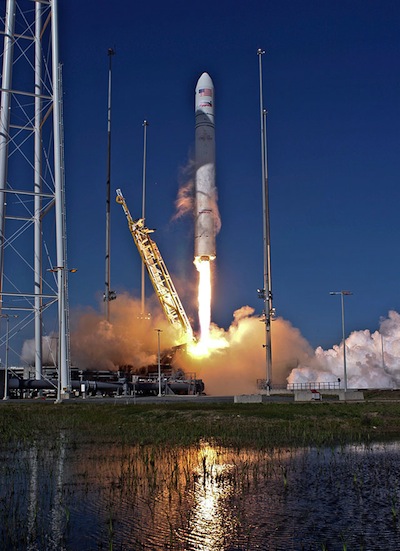
File photo of the Antares test launch on April 21. Credit: Thom Baur/Orbital Sciences
.
Outfitted with solar arrays, a propulsion system, and a laser navigation system, the Cygnus spacecraft will launch at least nine times over the next four years to resupply the space station, beginning with a Sept. 17 liftoff on a demonstration flight to prove the cargo ship can safely do its job.
Orbital officials said the Cygnus spacecraft was scheduled to be attached to the upper stage of the Antares launcher Wednesday. Final cargo loading into the Cygnus spacecraft's pressurized module is set for Saturday, followed by its enclosure inside the rocket's 12.8-foot-diameter payload fairing.
Rollout of the Antares rocket from its horizontal integration facility to the launch pad one mile away is expected Sept. 13.
Launch aboard an Antares rocket on Sept. 17 is scheduled for 11:16 a.m. EDT (1516 GMT) from launch pad 0A at the Mid-Atlantic Regional Spaceport at NASA's Wallops Flight Facility on Virginia's Eastern Shore.
The 133-foot-tall Antares rocket sailed through a test launch in April, deploying a mock-up Cygnus spacecraft in orbit after smooth burns of its twin-engine first stage and solid-fueled second stage motor.
If all goes according to plan, the Antares will release the Cygnus spacecraft in orbit about 10 minutes after liftoff.
Then the Cygnus spacecraft will begin its own mission, exercising its software, engines, and other systems to ensure the vehicle is in top condition before it is trusted to approach within the space station's safety corridor on autopilot.
Under the control of Orbital Sciences engineers based in the company's Dulles, Va., headquarters, the Cygnus will extend its solar arrays, activate its propulsion system and start firing its thrusters to pace its approach to the International Space Station, where it is due to arrive Sept. 22.
Astronaut Luca Parmitano will guide the space station's robot arm to reach out and grapple the Cygnus spacecraft as it floats just below the outpost. The robot arm will move the Cygnus to a berthing port on the space station's Harmony module, where it will stay for about 30 days as the crew opens hatches and starts to unpack 1,500 pounds of food and other gear carried inside the vehicle's pressurized module, which is built by Thales Alenia Space of Italy.
Future Cygnus flights will haul more cargo, but Suffredini said NASA requested a light load on the demonstration mission - mostly low-priority supplies that officials would not miss if lost.
The astronauts will place trash and other equipment for disposal into the Cygnus compartment before the automated spacecraft's departure in October. Like the space station's Japanese, European and Russian supply vehicles, the Cygnus will burn up in the atmosphere during re-entry.
SpaceX's Dragon capsule is the only operational cargo craft capable of returning significant payloads to Earth intact.
If the flight is successful, the next Cygnus mission - tentatively set for December - will be the first of eight operational cargo deliveries under a $1.9 billion resupply contract with NASA.
Quelle: Orbital
.

COTS Demonstration Mission Schedule Update (as of August 22, 2013)
August 2013
Following a planning and coordination meeting held yesterday, August 21, Orbital and NASA have identified September 17, 2013 as the targeted launch date for the COTS Demonstration Mission to the International Space Station. The launch of Orbital's Antares rocket carrying the company's Cygnus cargo logistics spacecraft will originate from the Mid-Atlantic Regional Spaceport launch pad 0A located at NASA's Wallops Flight Facility. Orbital's Antares team is targeting a launch time of 11:16 a.m., which is at the opening of an available 15-minute launch window.
Orbital Updates Schedule for COTS Demonstration Mission
August 2013
Orbital Sciences Corporation is targeting September 15 as the first opportunity to conduct the Antares launch of our Cygnus spacecraft for the COTS Demonstration Mission to the International Space Station (ISS) originating from NASA's Wallops Flight Facility. In the event that weather or other operational factors require the date to shift, the company will seek to carry out the launch no later than September 19. Currently, the Antares rocket for the COTS Demonstration Mission is completing testing at the Horizontal Integration Facility (HIF) at Wallops and will soon begin integration with the Cygnus spacecraft. Orbital anticipates that it will roll out the Antares rocket with the integrated Cygnus spacecraft to Pad 0A at the Mid-Atlantic Regional Spaceport (MARS) on or about September 11 to be ready for a September 15 launch.
AJ26 Engine Acceptance Test Successfully Conducted
August 2013
On August 8, 2013 Orbital and its Aerojet Rocketdyne and NASA teammates successfully conducted a 54 second hot fire acceptance test of an AJ26 engine. The AJ26 used in this test will be one of two engines that will power the first stage of Orbital's Antares rocket in its second mission to deliver cargo to the International Space Station under the Commercial Resupply Services (CRS) agreement with NASA. The mission, dubbed Orb-2, is scheduled to occur in 2014. The test was conducted at NASA Stennis Space Center in Mississippi. (NASA photo)
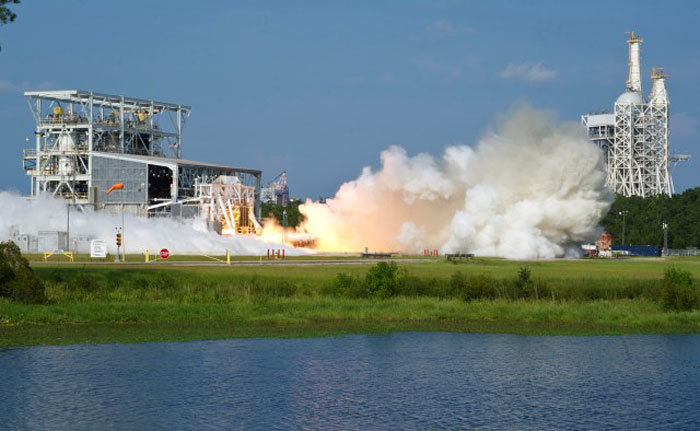
Second PCM Arrives at Wallops
Photos of the arrival of the Cygnus Pressurized Cargo Module to be used in the delivery of cargo to the International Space Station later this year in the first operational cargo delivery mission under the Commercial Resupply Service (CRS) agreement with NASA. (NASA photos)
Quelle: Orbital
.
Update: 11.09.2013
.
SpaceX: California launch delayed to next week
UPDATE, 8 PM: A SpaceX launch from California set for Saturday has been delayed, but maybe only to Sunday instead of next Tuesday.
Space writer Jeff Foust is at the American Institute of Aeronautics and Astronautics' AIAA SPACE conference this week in San Diego, and reported early Tuesday afternoon via Twitter that SpaceX vice president for government sales Adam Harris had told attendees at a launch vehicle update session that the first liftoff of the company's revamped Falcon 9 rocket had been pushed back to Sept. 17.
NASA's mission database shows only a day's postponement, from Sept. 14 to Sept. 15. A spokeswoman for Vandenberg said she could not immediately confirm the postponement, but for right now it looks like Sunday is the day.
Harris also said a static fire test — in which engines are briefly lit while the rocket is held down on the launch pad — was set for Wednesday, Foust reported.
The launch would be the first for the next-generation Falcon 9-R, designed not only to be more powerful but to have the potential for re-use — that would be the "R" in "9-R" (which Harris incidentally said is pronounced "niner" according to SpaceX CEO Elon Musk).
Space News' Irene Klotz talked to Musk late last week and found some nervousness going into the launch. “We’re being, as usual, extremely paranoid about the launch and trying to do everything we possibly can to improve the probability of success, but this is a new version of Falcon 9,” Musk told her.
Among other things, Klotz reports, that means Cassiope's maker, MacDonald Dettwiler and Associates, got a substantial discount on the launch (which answers the question I've been wondering about for a while: Why with the Falcon 9-R's development delays Cassiope wasn't moved to an older F9 to keep on schedule).
The F9-R is also scheduled for three satellite launches this fall from Cape Canaveral, Fla., that will prove the redesign's flightworthiness for NASA before it's used on the next Dragon cargo mission to the International Space Station, set for early next year.
.
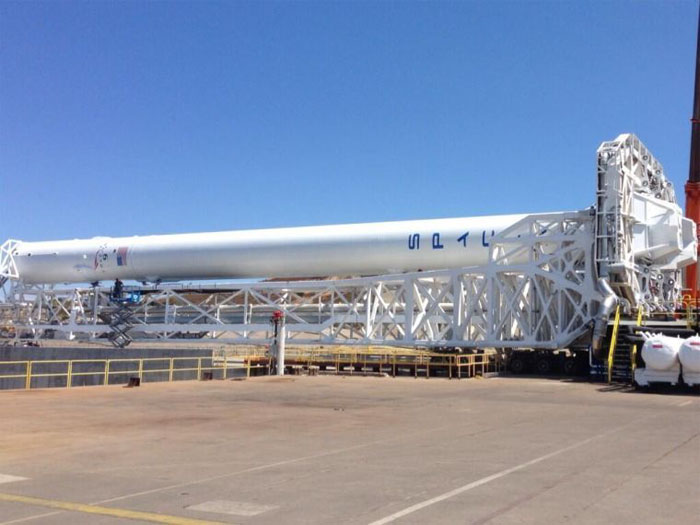
.
SpaceX CEO Elon Musk tweeted this photo Tuesday of the Falcon 9-R rolling out to its launch pad at Vandenberg Air Force Base, Calif.
.
Quelle: Waco Tribune
.
Update: 12.09.2013
.
Cygnus readies for flight
The Cygnus cargo spacecraft is mated to the Antares rocket in early September at NASA's Wallops Flight Facility on the Eastern Shore of Virginia. Orbital's Antares rocekt will launch Cygnus to the International Space Station at 11:16 a.m. EDT from Mid-Atlantic Regional Spaceport Pad 0A at Wallops. Cygnus will deliver approximately 1,300 pounds (589 kilograms) of cargo, including food and clothing, to the Expedition 37 crew aboard the station.
Quelle: NASA
.
NASA TV Coverage Set for Orbital Sciences Demonstration Mission
.
Orbital Sciences' Antares rocket at Mid-Atlantic Regional Spaceport Pad 0A at NASA's Wallops Flight Facility in April 2013. Orbital Sciences Corporation's cargo resupply demonstration mission to the International Space Station is scheduled for Sept. 17, 2013, at 11:16 a.m. EDT.
.
NASA Television will air pre- and post-launch news conferences and provide live launch coverage of Orbital Sciences Corporation's cargo resupply demonstration mission to the International Space Station.
The company's Cygnus cargo carrier will be the first spacecraft launched to the orbiting laboratory from Virginia. It will be launched aboard Orbital's Antares rocket at 11:16 a.m. EDT Tuesday, Sept. 17, from the Mid-Atlantic Regional Spaceport Pad-0A at NASA's Wallops Flight Facility in eastern Virginia.
Cygnus will deliver about 1,300 pounds (589 kilograms) of cargo, including food and clothing, to the Expedition 37 crew aboard the space station. Future flights of Cygnus will significantly increase NASA's ability to deliver new science investigations to the nation's only laboratory in microgravity.
NASA will preview the launch and mission in a news conference at 2 p.m. Monday, Sept. 16, at the Wallops Visitors Center. NASA TV and the agency's website will air the briefing live with question and answer capability available from participating NASA centers or on the telephone. To participate using the phone bridge, which is operated out of NASA's Johnson Space Center in Houston, journalists must call the Johnson newsroom at 281-483-5111 by 1:45 p.m. Questions also can be asked during the briefings via Twitter by using the hashtag #askNASA.
The briefing participants are:
-- Alan Lindenmoyer, program manager, NASA's Commercial Crew and Cargo Program
-- Frank Culbertson, executive vice president, Orbital Sciences Corp.
-- Mike Pinkston, Antares program manager, Orbital Sciences Corp.
-- Sarah Daugherty, test director, NASA's Wallops Flight Facility
NASA TV launch commentary coverage will begin at 10:45 a.m. Tuesday, Sept. 17. Video b-roll of launch preparations will air at 10:30 a.m. A post-launch news briefing will begin at approximately 1 p.m. at the Wallops Visitors Center. Johnson Space Center will operate a phone bridge for the post-launch briefings. To participate in the briefing by phone, reporters must call the Johnson newsroom at 281-483-5111 at least 15 minutes before the start of the briefing.
The deadline to apply for accreditation to attend the launch is 5 p.m. Thursday, Sept. 12 for media who are U.S. citizens. The deadline has passed for non-U.S. citizens. For additional information regarding accreditation contact Keith Koehler at keith.a.koehler@nasa.gov.
Rendezvous with the space station is scheduled for Sunday, Sept. 22. NASA Television coverage will begin at 4:30 a.m. and will continue through the capture and installation of the Cygnus spacecraft. Capture is scheduled for about 7:17 a.m. with installation of the craft beginning about 9 a.m.
At about 1 p.m., after Cygnus operations are complete, a joint news conference will take place at Johnson and at Orbital's Headquarters at 45101 Warp Drive in Dulles, Va. The briefing will be carried live on NASA Television and the agency's website. Media may participate by telephone by contacting Johnson's newsroom at 218-483-5111 no later than 15 minutes prior to the start of the briefing. Media interested in attending the briefing in Houston should contact Johnson's newsroom no later than 5 p.m. Friday, Sept. 20. Media who are U.S. citizens and want to attend the briefing at Orbital should call Barron Beneski at 703-406-5528 or email public.relations@orbital.com by noon Friday, Sept. 20. Media who are not U.S. citizens must submit their information to Orbital by noon Monday, Sept. 16.
Orbital is the second of NASA’s two partners taking part in the agency's COTS program. The goal of this program is to develop safe, reliable, and cost effective cargo transportation systems. Orbital began its work in 2008. Following a successful demonstration mission, the company is poised to begin regular resupply missions. The other partner, Space Exploration Technologies (SpaceX), began its work in 2006, and after a successful test flight in 2012, began flying regular cargo missions to the space station.
During Cygnus' flight to the station, several of the spacecraft's systems and capabilities will be tested. After the space station flight control team has verified the results of these objectives, the spacecraft will be cleared to approach the station several days after launch. Cygnus will undergo more tests and maneuvers and ultimately will arrive beneath the outpost, where astronauts on board will use the station’s arm to capture the craft. They then will install it on the bottom side of the station’s Harmony module.
Quelle: NASA
.
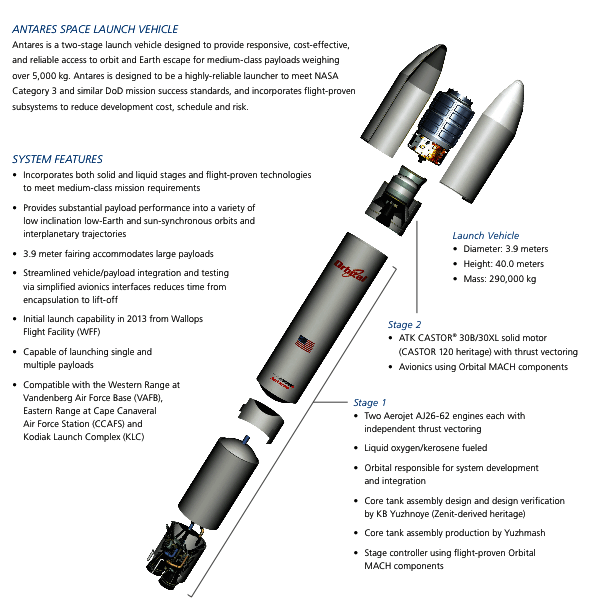
.
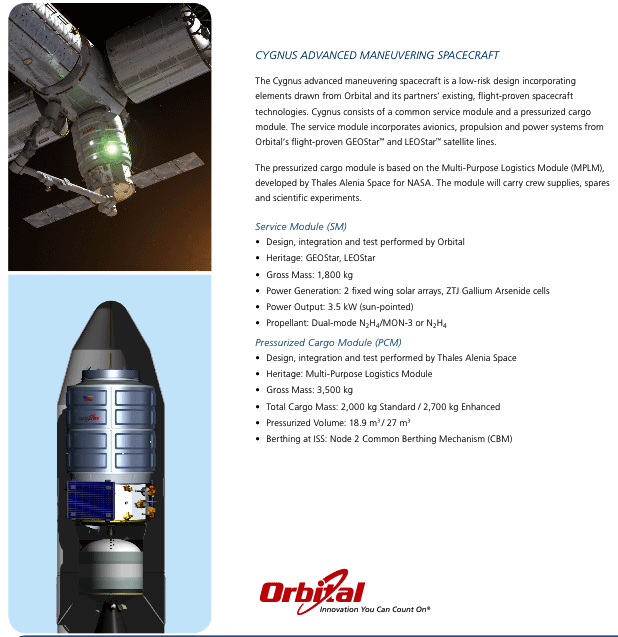
.
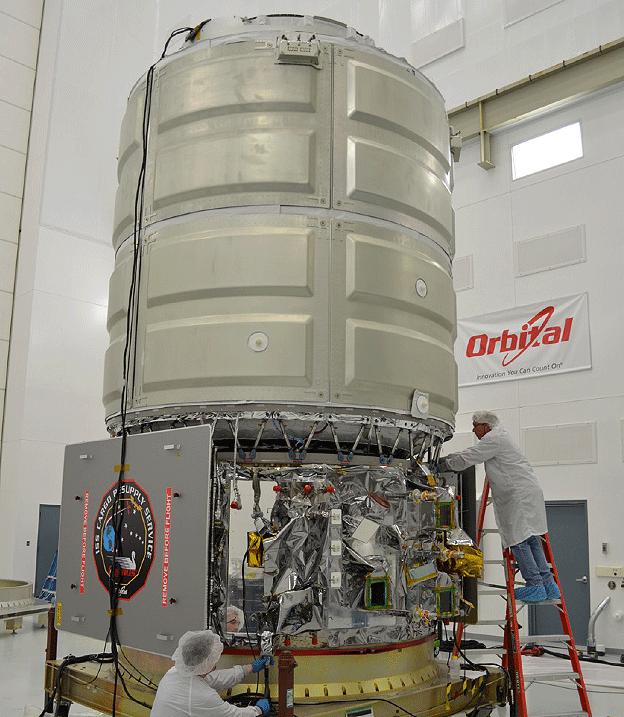
.
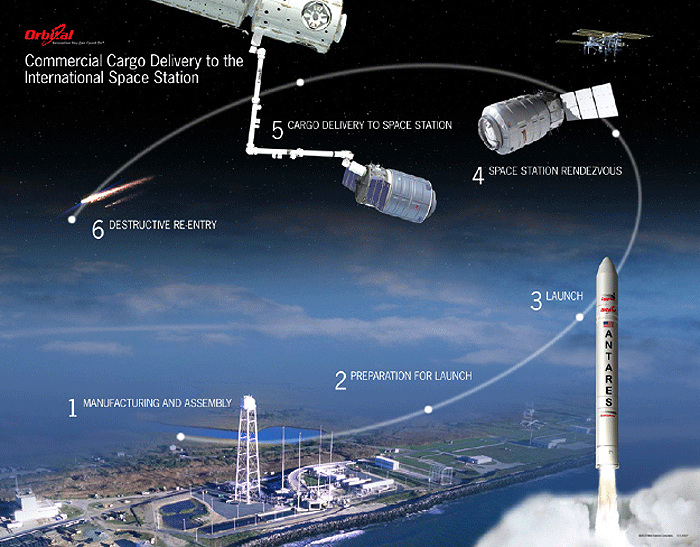
Quelle: Orbital
.
Update: 13.09.2013
.
Upgraded Falcon 9 rocket clears major prelaunch test
.
SpaceX's upgraded Falcon 9 rocket briefly fired nine Merlin 1D engines on the launch pad Thursday, but engineers will review data from the prelaunch static fire test before confirming the mission's targeted Sunday launch from Vandenberg Air Force Base in California, sources familiar with SpaceX's launch preparations said.
The static fire occurred after two holds in the final moments of Thursday's countdown to wring out minor problems. It was the first time engines have ignited at SpaceX's new California launch pad.
Launch of the upgraded Falcon 9 v1.1 rocket remains set for no earlier than Sunday in a two-hour window opening at 1600 GMT (12 p.m. EDT; 9 a.m. PDT) from Space Launch Complex 4-East at Vandenberg Air Force Base, Calif.
The Falcon 9's first stage engines ramped up to full power for just a few seconds, producing 1.3 million pounds of thrust as the rocket was held down on the launch pad by restraints.
The mission's passengers, including the Canadian Cassiope research satellite and several secondary payloads, were bolted to the Falcon 9 rocket for Thursday's static fire test.
The Falcon 9 v1.1, a prototype of SpaceX's concept for a reusable launcher, features upgraded Merlin 1D engines and stretched propellant tanks, boosting the rocket's performance for a range of missions on the company's launch manifest, including resupply flights to the International Space Station and launches of commercial communications satellites into geostationary transfer orbit, an orbit which SpaceX has not yet reached in previous Falcon 9 flights.
The Falcon 9 v1.1 upper stage is powered by a Merlin 1D engine optimized for performance in vacuum.
The launch of Cassiope is heading for a an elliptical polar orbit ranging in altitude from 186 miles to 932 miles, taking the small scientific satellite through Earth's ionosphere to sample plasma and other energetic particles for its research objectives.
The upcoming launch also marks the first use of the Falcon 9's 17-foot-diameter (5.2-meter) payload fairing, a lightweight structure composed of two clamshell-like halves made of carbon fiber with an aluminum honeycomb core.
The fairing, which shields the satellites from ambient prelaunch conditions and airflow in flight, will jettison a few minutes after launch once the Falcon 9 ascends through the lower layers of the atmosphere.
SpaceX plans to put the Falcon 9's empty first stage through a series of reusability tests after it completes its burn about 3 minutes into flight.
The flight plan calls for the first stage to reignite to slow the spent rocket's descent and impact the water with "minimal velocity," according to a waiver document issued by the Federal Aviation Administration, which licenses commercial launches for providers such as SpaceX.
The feat of returning the Falcon 9's first stage to the Pacific Ocean intact would be a key step toward SpaceX's goal of developing a reusable Falcon 9 rocket, in which the launcher's first stage would guide itself back to a pad near the launch site and make a rocket-assisted vertical touchdown on landing legs.
In an interview with Space News, SpaceX CEO and chief designer Elon Musk put low odds on the success of the stage's water landing test - at least on the first try.
"Just before we hit the ocean, we're going to relight the engine and see if we can mitigate the landing velocity to the point where the stage could potentially be recovered, but I give this maybe a 10 percent chance of success".
.
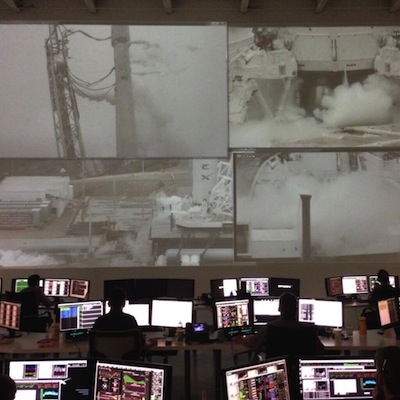
A view of Thursday's countdown from inside SpaceX's mission control in Hawthorne, Calif. Credit: Elon Musk
Quelle: SN
.
Update:14.09.2013
.
Orbital Rolls Out Antares Rocket to Wallops Launch Pad for COTS Demonstration Mission to International Space Station
-- Launch of Company’s First Cygnus Cargo Spacecraft Aboard Antares Rocket Targeted for Next Tuesday, September 17 --
-- COTS Demonstration Mission to Pave the Way for Regularly Scheduled ISS Supply Flights Beginning Late This Year --
(Dulles, VA 13 September 2013) – Earlier today, Orbital Sciences Corporation (NYSE: ORB) rolled out its Antares™ rocket that will launch the company’s first Cygnus™ spacecraft to the International Space Station (ISS) for its demonstration mission under the Commercial Orbital Transportations Services (COTS) joint development program with the National Aeronautics and Space Administration (NASA). Orbital is currently targeting Tuesday, September 17 for the launch during a 15-minute window from 11:16 to 11:31 a.m. (EDT). During the mission, the Antares rocket will boost the Cygnus spacecraft into a parking orbit of approximately 245 x 300 kilometers in altitude, inclined at 51.6° to the equator. Live coverage of the COTS demonstration mission will be available on NASA Television and at http://www.nasa.gov/ntv.
Roll-out operations began at about 2:30 a.m., with the Antares rocket first emerging from its Horizontal Integration Facility at about 3:45 a.m. this morning. The rocket was transported about one mile to the Mid-Atlantic Regional Spaceport (MARS) launch complex, known as Pad 0A, aboard the Transporter/Erector/Launcher (TEL), a specialized vehicle that also raised the rocket to a vertical position on the launch pad and serves as a support interface between the rocket and the launch complex’s systems. By about 1:00 p.m., Antares was in a fully vertical position on the launch pad.
Following its launch by the Antares rocket, Cygnus will conduct an extensive series of in-orbit maneuvers and demonstrations over a five-day period to verify that all onboard operating systems are functioning properly and that ground controllers at Orbital’s Mission Control Center (MCC), located at the company’s Dulles, VA campus, are able to command, control and communicate with the spacecraft as designed and extensively rehearsed. Assuming a September 17 launch, Orbital and NASA are currently targeting the morning of Sunday, September 22, for the Cygnus rendezvous, grapple and berthing operations with the ISS at an altitude of about 415 kilometers above the Earth. On its demonstration mission, Cygnus will deliver approximately 700 kilograms of cargo, including food and clothing, to the Expedition 37 crew, which will also load Cygnus with disposal cargo prior to its departure from the station approximately 30 days later.
Mr. David W. Thompson, Orbital’s Chairman and Chief Executive Officer, said, “Today’s roll-out of the fully integrated Antares rocket and Cygnus spacecraft, along with this weekend’s on-pad testing and readiness review, are the final steps leading up to next week’s launch of our COTS demonstration mission. This mission will mark the completion of a five-year journey that NASA and our company embarked on in 2008 to create a new medium-class rocket, a sophisticated logistics spacecraft and a world-class launch site at the Wallops Flight Facility.”
Following a successful COTS demonstration mission, Orbital plans to begin regularly scheduled cargo supply missions under its Commercial Resupply Services (CRS) contract with NASA later this year. Orbital is currently scheduled to launch the first of eight CRS missions to the ISS as early as December. All CRS flights will originate from NASA’s Wallops base, which is geographically well suited for ISS missions and can also accommodate launches of scientific, defense and commercial satellites to other orbits.
Quelle: Orbital
.
Update: 14.09.2013 / 16.00 MESZ
The Falcon 9 rocket won’t make its West Coast debut this weekend, because crews need to assess glitches spotted during a critical test at Vandenberg Air Force Base.
Late Thursday night, Space Exploration Technologies CEO Elon Musk confirmed the static fire test occurred earlier in the day at Space Launch Complex-4 East on South Base.
The test involved firing the nine engines on the rocket’s first stage while Falcon remained affixed to the ground.
The rocket achieved “full thrust” in the 2-second firing, Musk noted on Twitter.
“Some anomalies to be investigated, so launch date TBD,” he added, using the abbreviation for “to be decided.”
The team first tried to conduct the test Wednesday, but scrubbed the attempt for unexplained reasons.
While officials with the private firm remained mum about plans for a launch attempt Sunday, the schedule wasn’t secret because nearby park visitors were advised they could be evacuated Sunday morning due to a Vandenberg operation. Additionally, the typical notices to the boaters and pilots warned them to remain out of the area.
By Friday morning, the notices to mariners and aviators had been canceled for Sunday’s launch attempt with no new date set.
However, Musk said in one broadcast interview that the launch wouldn’t come for one to two weeks.
Another source pinpoints Falcon’s new launch date as being Sept. 30.
The Western Range at Vandenberg, which supported a Delta 4-Heavy launch Aug. 28, has a busy schedule this month with two Minuteman 3 tests on the manifest, including one planned for Sept. 22.
Quelle: Santa Maria Times
+
Update: 14.09.2013 / 22.30 MESZ

A combination of bad weather and a technical glitch have pushed a brand-new supply ship's debut test flight to the International Space Station back at least one day, to Wednesday (Sept. 18).
The unmanned Cygnus spacecraft, built by Virginia-based company Orbital Sciences, is now scheduled to blast off atop an Antares rocket from Wallops Island, Va., on Wednesday (Sept. 18) rather than Tuesday. Liftoff is set for 10:50 a.m. EDT (1450 GMT).
"The combination of yesterday’s poor weather that delayed rollout of the rocket to the launch pad and a technical issue that was identified during a combined systems test held last night involving communications between ground equipment and the rocket’s flight computer drove the decision to delay the launch," Orbital Science officials wrote in an update Saturday (Sept. 14)
.
Update: 15.09.2013
.
Orbital Sciences Corp. of Dulles, Va., will postpone by at least 24 hours the launch of its Antares rocket and Cygnus spacecraft on a demonstration mission to the International Space Station from NASA's Wallops Flight Facility in eastern Virginia. The new launch window is targeted for Wednesday, Sept. 18 between 10:50 to 11:05 a.m. EDT from the Mid-Atlantic Regional Spaceport Pad-0A at Wallops. Rendezvous with the space station remains scheduled for Sunday, Sept. 22. NASA Television will air pre- and post-launch news conferences and provide live launch and rendezvous coverage of the mission.
The postponement is due to a combination of Friday’s poor weather, which delayed roll-out of Antares to the launch pad, and a technical issue identified during a combined systems test held Friday night involving communications between ground equipment and the rocket’s flight computer. The problem has been identified and corrected. The teams are working to understand why the problem occurred.Orbital is the second of NASA’s two partners taking part in the agency's COTS program. The goal of this program is to develop safe, reliable, and cost effective cargo transportation systems. Orbital began its work in 2008. Following a successful demonstration mission, the company is poised to begin regular resupply missions. The other partner, Space Exploration Technologies (SpaceX), began its work in 2006, and after a successful test flight in 2012, began flying regular cargo missions to the space station.
During Cygnus' flight to the station, several of the spacecraft's systems and capabilities will be tested. After the space station flight control team has verified the results of these objectives, the spacecraft will be cleared to approach the station several days after launch. Cygnus will undergo more tests and maneuvers and ultimately will arrive beneath the outpost, where astronauts on board will use the station’s arm to capture the craft. They then will install it on the bottom side of the station’s Harmony module.
Quelle: NASA
.
Update: 16.09.2013
.
Musk: SpaceX launch pushed to end of month
Between the need for a second full-dress-rehearsal engine test and the other activities conducted on the U.S. Air Force's Western Range, SpaceX is now pushing the maiden launch of its Falcon 9-R rocket to the end of the month, company CEO Elon Musk said early Sunday.
Here's the tweet:

A static fire test conducted Thursday was mostly successful but turned up some anomalies that SpaceX engineers wanted to iron out before attempting a launch of the heavily upgraded Falcon 9. The second test could come as early as Wednesday.
Meanwhile, on the opposite coast, SpaceX rival Orbital Sciences has moved the demonstration launch of its Antares rocket and Cygnus cargo ship — competitor for International Space Station supply runs to SpaceX's Dragon — from Tuesday to Wednesday, after bad weather delayed the launch-pad rollout and a faulty cable was found and replaced.
That launch is set for between 9:50 and 10:05 a.m. CDT Wednesday from Wallops Island, Va.
Quelle: Waco Tribune
.
Update: 17.09.2013
.
How to See the Historic Antares/Cygnus Launch to Space Station on Sept. 18
.
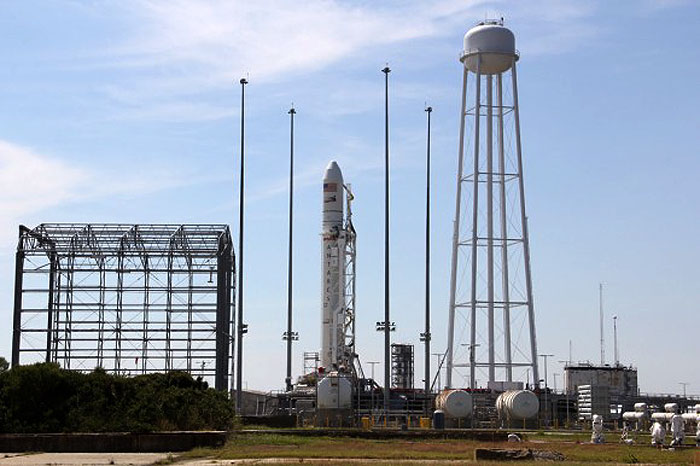
WALLOPS ISLAND, VA – “All Systems Are GO” for the Sept. 18 launch of Orbital Sciences Antares commercial rocket carrying the first ever fully functional Cygnus commercial resupply vehicle to orbit on the history making first flight blasting off from NASA’s Wallops Island Facility- along the eastern shore of Virginia and bound for the International Space Station (ISS).
Here’s our guide on “How to See the Antares/Cygnus Launch” – complete with viewing maps and trajectory graphics from a variety of prime viewing locations courtesy of Orbital Sciences, the private company that developed both the Antares rocket and Cygnus spaceship aimed at keeping the ISS fully operational for science research.
And although the launch is slated for late morning it should still be visible to millions of spectators along a lengthy swath of the US East Coast from North Carolina to Connecticut - weather permitting – who may have never before witnessed such a mighty rocket launch.
The daylight liftoff of the powerful two stage Antares rocket is scheduled for Wednesday, Sept 18 at 10:50 a.m. EDT from Launch Pad 0A at the Mid-Atlantic Regional Spaceport at NASA Wallops Island, Virginia. The launch window extends 15 minutes to 11:05 a.m.
Quelle: Orbital
.
Update: 20.00 MESZ
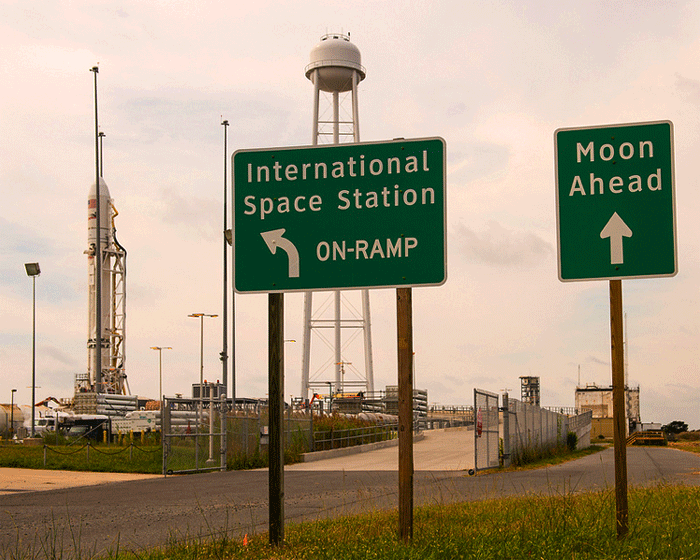
Wallops Grants Authority to Proceed for Launch of Orbital Demonstration Mission
September 17, 2013 - 10:14 AM EDT
NASA Wallops Flight Facility Site Director Bill Wrobel has granted Authority to Proceed (ATP) for the Wednesday, Sept. 18, launch of a demonstration mission to the International Space Station by the Orbital Sciences Corp. of Dulles, Va. Orbital is targeting a 10:50 a.m. EDT launch from the Mid-Atlantic Regional Spaceport Pad-0A at Wallops.
ATP verifies project managers, the Wallops range and range safety are ready to support the established plans and procedures for launch operations. This followed Monday's Launch Readiness Review, at which Orbital and NASA managers gave a “go” to proceed toward launch.
NASA will preview the launch and mission in a news conference at 2 p.m. today at the Wallops Visitors Center. NASA TV and the agency's website will air the briefing live with question and answer capability available from participating NASA centers or on the telephone. To participate using the phone bridge, which is operated out of NASA's Johnson Space Center in Houston, journalists must call the Johnson newsroom at 281-483-5111 by 1:45 p.m.
Quelle: NASA
.
Update: 18.09.2013
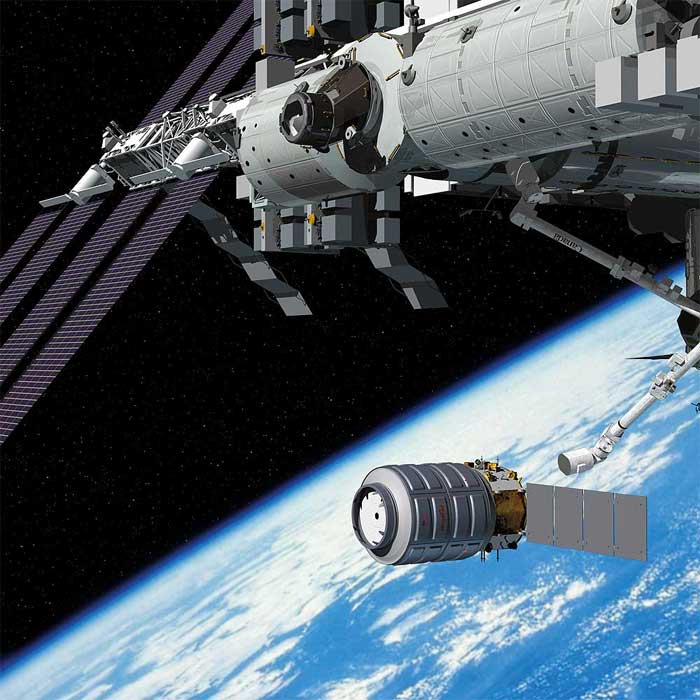
Countdown Running Smoothly, Forecast 75 Percent ‘Go’
.
The countdown is on and running smoothly at the Mid-Atlantic Regional Spaceport at Wallops, Va. ahead of this morning’s launch of the Orbital Sciences Cygnus spacecraft on an Antares rocket. Continuous coverage on this NASA Launch Blog begins at 10:15 a.m. leading up to the 10:50 a.m. liftoff.
The weather forecast for today’s launch opportunity calls for a 75 percent chance of acceptable conditions at Wallops Flight Facility at launch time. The concern is for low clouds.
Orbital Sciences designed this logo for the launch of its Antares rocket and Cygnus spacecraft. The design shows the rocket and the Cygnus spacecraft, along with the International Space Station. It also shows the Virginia launch site’s location with a star on a map.
Quelle: NASA
.
Frams: NASA-TV-LIVE
.
.
.
.
Blick in Orbital-Bodenstation
.
.
.
.
.
.
.
.
.
.
.
.
.
.
.
.
.
.
.
.
.
.
.
.
.
.
.
.
.
.
.
.
.
.
.
Quelle: NASA-TV-LIVE
.
Update: 19.09.2013
.
Cygnus En Route for Sunday Rendezvous With Station
.
While the newest commercial cargo vehicle to join the International Space Station’s resupply fleet launched Wednesday morning on its demonstration flight, the Expedition 37 crew aboard the orbiting complex was hard at work with medical research, emergency simulation training and preparations for Sunday’s arrival of the new space freighter.
NASA commercial space partner Orbital Sciences Corp. of Dulles, Va., launched its Cygnus cargo spacecraft aboard its Antares rocket at 10:58 a.m. EDT Wednesday from the Mid-Atlantic Regional Spaceport Pad-0A at NASA’s Wallops Flight Facility in Virginia. At the time of launch, the space station was flying about 261 miles above the southern Indian Ocean. Cygnus will rendezvous with the station on Sunday on its demonstration mission to deliver 1,300 pounds of cargo, including food and clothing, to the space station's Expedition 37 crew.All three Expedition 37 crew members -- Commander Fyodor Yurchikhin and Flight Engineers Karen Nyberg and Luca Parmitano -- gathered around a laptop computer screen in the station’s Destiny laboratory to watch a live video stream of the launch of Cygnus. Nyberg then sent her congratulations to Orbital Sciences via her Twitter account.
Nyberg and Parmitano began their workday aboard the space station reviewing Cygnus’ cargo manifest and discussing with ground teams the plan to unload the cargo. During the month that Cygnus is berthed to the station, the crew will unload its 1,300 pounds of cargo and reload it with trash for disposal when Cygnus departs for a destructive re-entry in the Earth’s atmosphere.
The two astronauts then moved on to some on-board training to review the installation procedure for Cygnus. When Cygnus nears the station on Sunday, Parmitano, with assistance from Nyberg, will use the robotics workstation in the cupola to command the station’s 57-foot robotic arm, Canadarm2, to reach out and grapple the vehicle. He will then maneuver the arm to guide Cygnus to its docking port on the Earth-facing side of the Harmony node for installation.
All three Expedition 37 crew members participated in on-board training to review their roles and responsibilities in the event of an emergency aboard the station such as a fire or rapid depressurization. Afterward, they tagged up with flight controllers at Mission Control in Houston to review the drill and discuss any changes needed.
Nyberg and Parmitano wrapped up their workday with another round of medical tests for the Ocular Health study as they used a fundoscope to examine each other’s eyes in detail. Vision changes have been observed in some astronauts returning from long-duration spaceflight, and flight surgeons are seeking to learn more about its root causes and develop countermeasures to minimize this risk.
Quelle: NASA
.
Update: 20.09.2013
.
A new commercial cargo spacecraft remains on track to rendezvous with the International Space Station early Sunday.
Two days after launching from the coast of Virginia, Orbital Sciences Corp.’s robotic Cygnus freighter continues to fly trouble-free.
“All continuing to go very smoothly aboard Cygnus and aboard the International Space Station,” NASA TV commentator Kyle Herring reported this morning.
Orbital and NASA today will review early data from the flight, and the station’s Mission Management Team will meet Saturday morning to review the status of Sunday morning’s rendezvous.
Capture of the Cygnus by a robotic arm is tentatively planned for 7:25 a.m. Sunday.
Early today, the spacecraft was trailing the station by about 1,200 miles and closing the gap by about 80 miles each orbit, with additional thruster firings planned today and Saturday.
The Cygnus is packed with 1,300 pounds of food, clothing and other supplies, and some student experiments.
It is flying for the first time on a demonstration mission for NASA’s Commercial Orbital Transportation Services program.
The mission is a precursor to the start of Orbital’s $1.9 billion contract for eight resupply missions.
Quelle: Florida Today
.
Update: 21.09.2013
.
Station Crew Readies for Cygnus' Sunday Arrival
With the Orbital Sciences Corporation’s Cygnus cargo vehicle gradually closing in on the International Space Station for the first time, the Expedition 37 crew conducted a final cargo and robotics review Friday to prepare for the arrival of the new commercial cargo craft.
Cygnus, which launched at 10:58 a.m. EDT Wednesday from at NASA’s Wallops Flight Facility in Virginia, was about 1,200 statute miles behind the station as of Friday morning, closing in another 82 statute miles with every orbit as it heads toward Sunday’s rendezvous.
The two flight engineers aboard the station, NASA astronaut Karen Nyberg and European Space Agency astronaut Luca Parmitano, spent some time studying the rendezvous timeline before moving on to a review of Cygnus’ cargo manifest. Cygnus, which is capable of carrying over 3,700 pounds of cargo within its 662 cubic foot pressurized cargo hold, is delivering around 1,300 pounds of crew supplies on this demonstration flight.
Parmitano and Nyberg wrapped up their preparations Friday with a final review of the procedures for the robotic grapple and berthing of the commercial cargo craft. Parmitano, with assistance from Nyberg, will be at the controls of the robotics workstation in the cupola to command the station’s s 57-foot robotic arm, Canadarm2, to reach out and grapple the vehicle at 7:25 a.m. Sunday. He will then maneuver the arm to guide Cygnus to its docking port on the Earth-facing side of the Harmony node for its installation slated to begin at 9:15 a.m.
NASA Television will provide live coverage of all the activities Sunday starting at 4:30 a.m.
.
NASA Photographer Creates Awesome Private Rocket Launch Photo with Infrared
The Orbital Sciences Corporation Antares rocket, with the Cygnus cargo spacecraft aboard, is seen in this false color infrared image, as it launches from Pad-0A of the Mid-Atlantic Regional Spaceport (MARS), Wednesday, Sept. 18, 2013, NASA Wallops Flight Facility, Va.
Credit: NASA/Bill Ingalls
Quelle: NASA
.
Update: 21.09.2013 / 23.00 MESZ
.
Cygnus In-Orbit Update
September 21, 2013
As of mid-day today, Cygnus continues to perform well in orbit, remaining on track for its rendezvous and berthing with the International Space Station tomorrow morning. At noon today, the Cygnus spacecraft was approximately 400 km behind and 4 km below the ISS, closing the distance between the two at a rate of about 24 km per hour.
NASA will begin live television coverage of Cygnus' approach to the station at 4:30 a.m. (EDT) and will continue through the grapple and berthing activities that are expected to last until late morning. NASA TV can be found at www.nasa.gov/ntv. There is also a press conference conference scheduled for 1:00 p.m. that will be carried live on NASA TV.
Cygnus In-Orbit Update
September 20
Earlier today, Cygnus successfully completed its 4th "Delta V" orbit-raising burn as the spacecraft continues to chase the International Space Station in preparation for its rendezvous and berthing on Sunday, September 22. All systems on the Cygnus spacecraft continue to operate very well and the mission is proceeding just as planned. Tomorrow is a relatively quiet operational day for Cygnus before the tempo of demonstrations and approach burns begins to pick up early Sunday morning when final approach to the ISS begins.
Cygnus COTS Demonstration Status
September 20, 2013
Before Cygnus can rendezvous and berth with the International Space Station (ISS), it must perform several thruster firings to raise its orbit and catch up with the ISS. Cygnus must also perform 10 maneuvers to demonstrate the safety capabilities of the Cygnus. Once each demonstration maneuver is complete, Orbital will send a data package to NASA for review to verify that the demonstration has met its objectives.
Since the launch of the spacecraft at 10:58 a.m. on Wednesday, September 18, the Cygnus team has been busy completing the first two of 10 required in-orbit demonstrations and has successfully conducted three Delta V burns to raise Cygnus' orbit. On Friday, September 20 , the team will conduct Delta V burn #4 to raise Cygnus' orbit to within 4 km of the ISS orbit altitude. If needed, an additional burn may be conducted in Saturday, September 21, to "fine tune" Cygnus' orbit.
The Cygnus team is busiest on Sunday, September 22, the day of rendezvous, grapple and berthing with the ISS. That day, the remaining eight demonstrations and a series of smaller Approach Delta Velocity (ADV) burns will be carried out prior to capture by the station crew and berthing with the ISS.
Once the final demonstration maneuver is deemed successful, NASA will give approval for the approach to within 10 meters of the station where Cygnus will be grappled by the robotic arm and guided to its berthing port.
| Completed |
Free drift & abort demonstration |
Demonstrate the spacecraft’s ability to float freely with all of its thrusters inhibited and to safely move away from the station if necessary |
| 9/22 |
Position and attitude control demonstration |
Test the spacecraft’s ability to hold its position |
| 9/22 |
Relative GPS navigation demonstration |
Verify the spacecraft’s GPS-based navigation system is operating as expected |
| 9/22 |
Onboard targeting demonstration |
Confirm the spacecraft’s ability to maneuver to a targeted position in space |
| |
ADV 1 |
Raises Cygnus from 4 km below ISS to 1.4 km |
| 9/22 |
Reaction Engine Assembly (REA) maneuver demonstration |
Demonstrate Cygnus’ attitude control system’s ability to maneuver |
| |
ADV 2 |
Moves Cygnus closer to R-Bar (directly below the ISS) |
| 9/22 |
Hardware Command Panel (HCP) checkout |
Verify that the ISS crew can command Cygnus using the HCP aboard the Station |
| |
ADV 3 |
Positions Cygnus to intersect the R-Bar |
| 9/22 |
LIDAR navigation demonstration |
Confirm that Cygnus’ laser navigation sensor’s position and velocity data is accurate and as expected in prefight simulations |
| |
ADV 4 |
Continues Cygnus’ ascent on the R-Bar toward 250m |
| 9/22 |
ADV 5 |
Continues Cygnus ascent up the R-bar |
| 9/22 |
Retreat demonstration |
Verify that the ISS crew can command Cygnus to retreat away from the ISS, if needed |
| 9/22 |
Hold demonstration |
Verify that the ISS crew can command Cygnus to hold during approach, if needed |
| 9/22 |
LIDAR single reflector tracking demonstration |
Demonstrates Cygnus’ LIDAR’s capability to focus on a single reflector on the ISS
.
Quelle: Orbital
|
